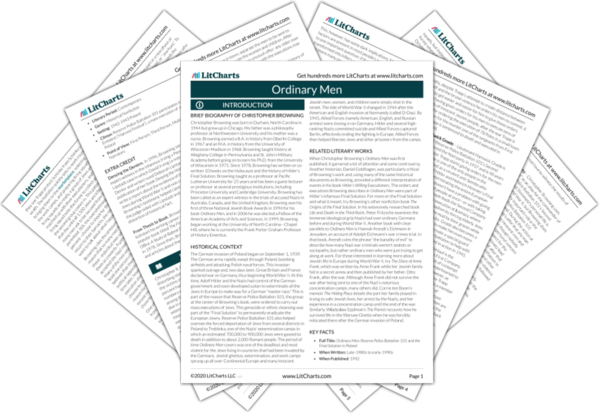The shooting at Józefów was bloody, but during the Łomazy massacre there are literally rivers of blood and the men are witnessing it all happen up close. The streak of sadism that characterizes the preparatory stage of the massacre continues during the shooting. In Józefów, the men attempt to bring their victims to areas of the forest where they won’t see previous victims’ bodies. During this massacre, however, the men exhibit total indifference to how their victims feel—there is no attempt to make them comfortable, alleviate their fear, or treat them with any dignity or respect. The men don’t even make sure they are actually killing the Jews as they shoot, as shown by how many continue moving in the grave.
